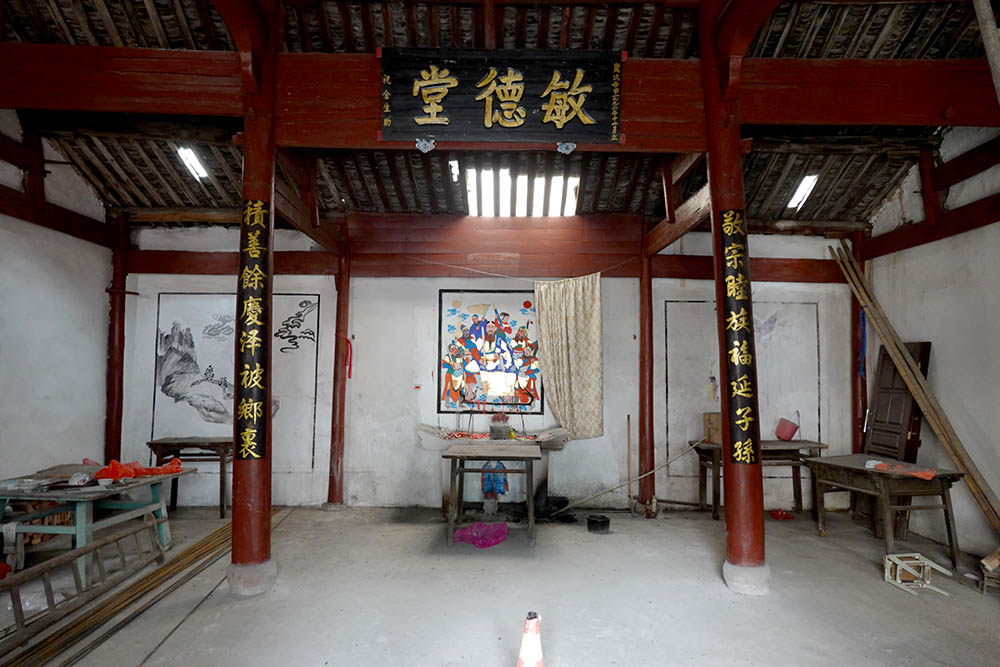Spatial Practices of Rites in Rural China. How Two Ritual Spaces Have Been Shaping Vernacular Architecture in Central Zhejiang
Ritual spaces, where sacred and secular rites occur, emerge from spatial practices shaped by those rituals. How do such practices reflect specific rites, and how have they evolved locally over time? Vernacular buildings in rural Jinhua offer vivid insights into this architectural and cultural transformation.
A lecture by Xiaomei ZHAO, IIAS Research Fellow from the Department of Cultural Heritage and Museology at Fudan University, Shanghai, China. Followed by Q&A with discussants.
You can join this lecture in the IIAS conference room from 10:30 a.m. to 12:00 noon, Amsterdam Time/CEST (not online).
All are welcome; registration is required due to limited seating.
The Lecture
Ritual spaces, where religious, ceremonial, and symbolic rites take place, are products of spatial practices embedded in those rituals. Since the late 19th century, research on ritual spaces—particularly in the fields of architecture and anthropology—has been conducted through three interwoven lenses: cultural symbolism, social function, and embodied practice. This lecture attempts to integrate these interdisciplinary approaches by examining several types of ritual architecture in a specific region of rural China that share two spatial prototypes and three ritual functions.
Located in central Zhejiang Province, Jinhua (金华)—known as Wuzhou (婺州) before the mid-14th century—has a long settlement history, beginning with the ancient Yue people (百越) around 2000 BCE, followed by the arrival of Han migrants in the late 6th century. By the 12th century, the region had established a renowned local Confucian school. As a result, both state rituals and popular religious practices have coexisted in local society, resulting in a diversity of ritual buildings in rural villages.
Based on extensive field surveys of vernacular architecture—including residential houses, clan ancestral chambers, incense-offering halls, and clan ancestral temples—in the Wuyi and Yongkang regions (upper reaches of the Wujiang River within Jinhua), two primary spatial prototypes of ritual space are identified. The Bright Hall (Mingting, 明厅) – a central hall located within courtyard houses, originating from official ritual architecture. The Open Bay (Xuanjian, 轩间) – the central bay on the ground floor of the final two-story building along the axial layout, derived from indigenous folk houses. These two spatial types are where ancestral sacrifices, deity worship, and life-cycle ceremonies typically take place. Their forms and combinations have evolved in tandem with the transformation of social structures, giving rise to new types of ritual architecture.
This lecture aims to interpret architectural practices related to lineage cohabitation and family-based dwelling patterns, revealing how ritual spaces have adapted and transformed in response to broader social and cultural developments—from the dual perspectives of architecture and ritual.

The Speaker
Dr Xiaomei Zhao is a scholar of heritage studies with a background in archaeology and architectural history. She is affiliated with the Department of Cultural Heritage and Museology at Fudan University and the International Institute for Asian Studies at Leiden University. Her research focuses on vernacular architecture and cultural landscapes in both rural and urban China, and she has extensive fieldwork experience. She also teaches cultural heritage within the broader context of the humanities and social sciences. She is currently completing her book project, Living in Harmony in Transitional Times: Settlements, Houses, and Heritage Practices in the Sangjiang River Basin. In addition, she is leading a new research project titled The Historic Evolution and Interaction Mechanism of Rural Rites and Ritual Architecture in Central Zhejiang Since the Ming and Qing Dynasties from the Perspective of Paradigm Fusion.
Q&A
The Q&A will be facilitated by two discussants from the fields of architectural history and anthropology.